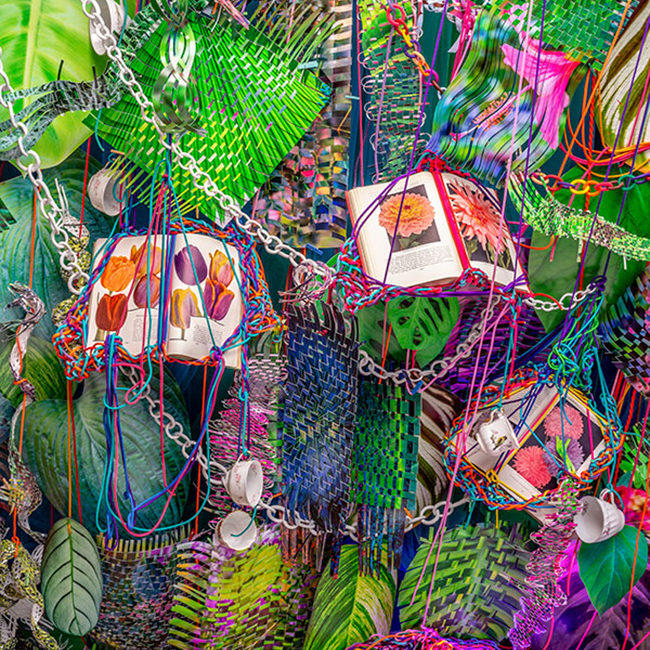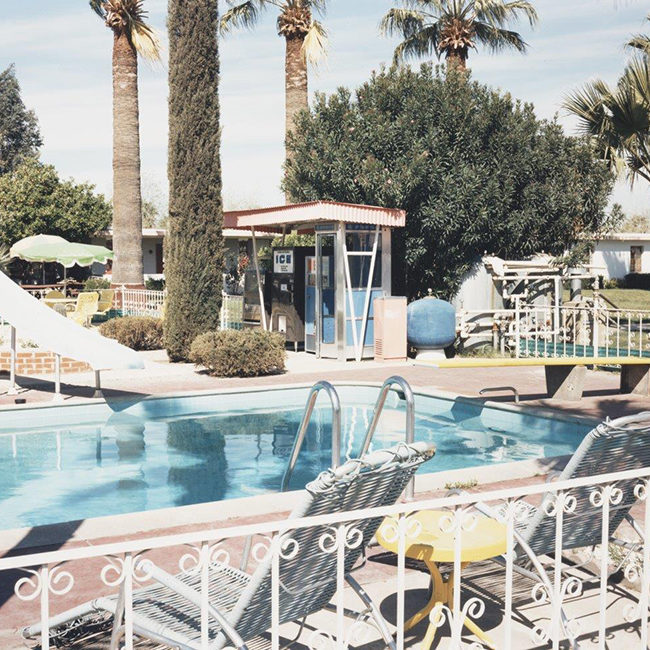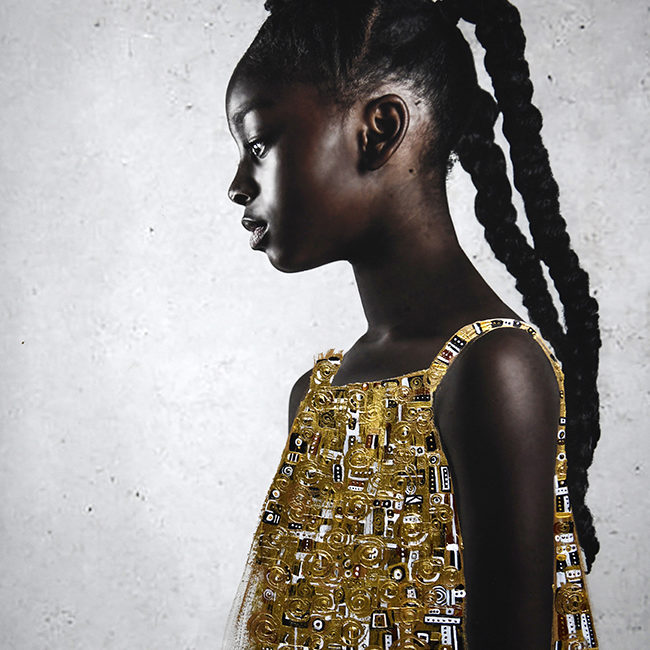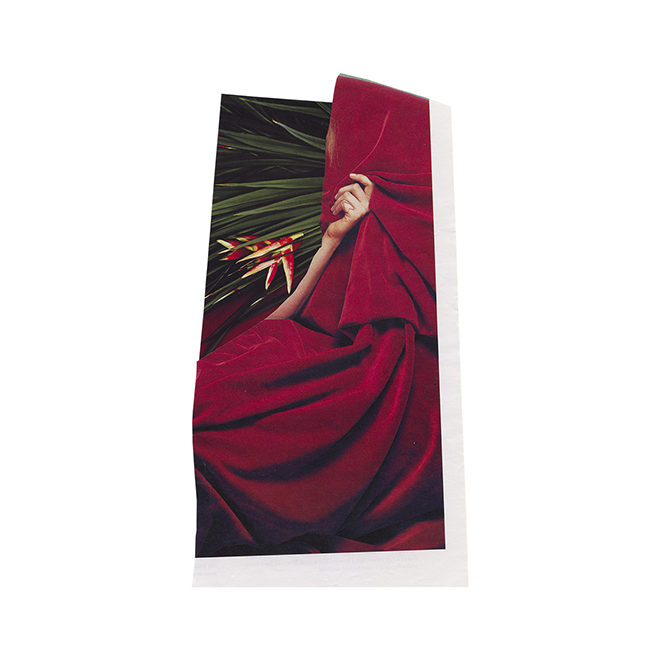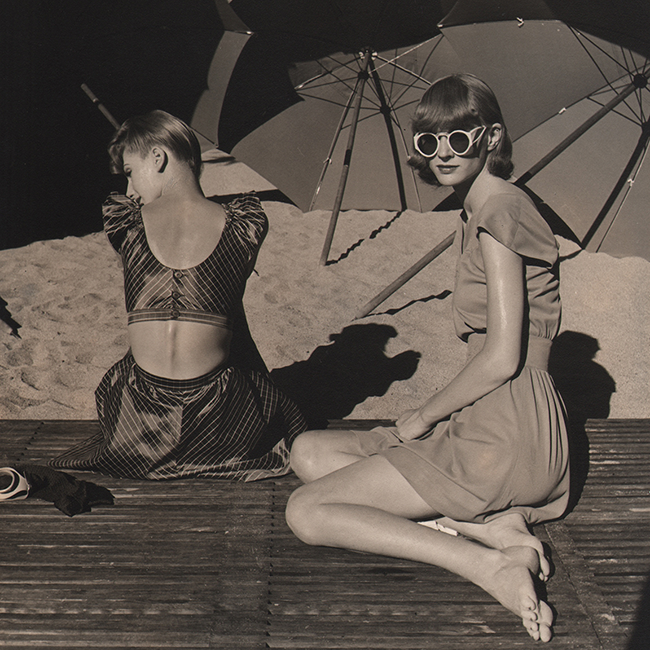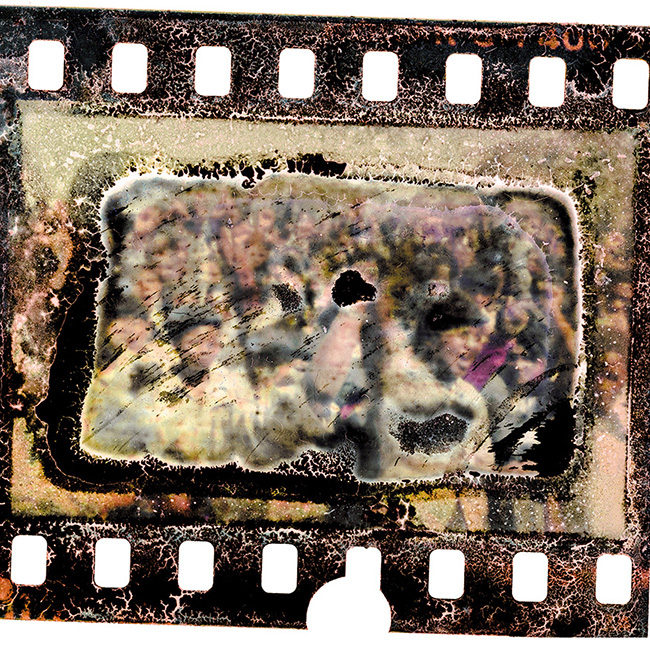Inspired by contemporary advertising imagery and by 17th century Dutch still lifes, Jeanette May’s “Tech Vanitas” series features collections of obsolete technology—from teal iMacs and flip phones to Kodak Brownies and vintage toasters—all lovingly arranged on lush backdrops. The series is on view at Klompching Gallery in Brooklyn in a two-person show with Kimberly Witham that runs until June 30.
May says that when planning the images, she tries to include examples from several common categories of domestic technology, including optical and communication devices, audio equipment, time keepers and light sources. “Items not fitting these categories may be included, but these five are key,” she tells PDN by email. Light sources range from the snowy glow of a black and white television to the warmth of a string of chili pepper Christmas lights. The palette for each image reflects the esthetics of different eras. “The greens of the 1950s are different than the 1970s,” she observes. Working in her studio at Elizabeth Foundation for the Arts in Manhattan, “I start selecting items from my ever-changing stash, make sure my list of requirements is met, think about color and shape, head down the street to buy fabric (garment district!), and commence stacking. The whole process can takes days.” She prints the finished images on an Epson professional printer using Canson Infinity Platine paper.
The objects come from a range of sources, including her own personal collection as well as pieces she rents and buys. “Most photographers collect vintage cameras,” she says, and she includes some from her own collection. “Additional props have been borrowed from friends, rented from the Gowanus E-waste Warehouse, and occasionally purchased at sales, flea markets, antique stores. I’m trying not to acquire more obsolete technology! The Gowanus E-waste Warehouse has been very helpful with hard to find items like vintage landline phones.”
May studied painting as an undergrad, and says the experience informs her interest in the Golden Age of Dutch still life, where tables are set with flowers that will soon spoil in reference to the fleeting quality of pleasure and wealth. Starting on the project, “I re-educated myself on the history of Dutch art and culture, and found relevance in their newfound wealth, abundance of material possessions, and interest in craftsmanship and collecting.” As a digital photography teacher, she is also aware of how quickly imaging technology changes, and “feels a pressure to keep up with camera technology and Adobe upgrades.” Part of the tension in May’s series comes from how technology in these different categories has aged. A cell phone from only a few years ago looks obsolete, but a lamp or a toaster from 50 years ago might seem fairly contemporary.
In a statement, May writes that her images “embrace the anxiety surrounding technological obsolescence.” Technology makes “domestic life faster, smarter, easier, and more complicated,” she writes, but “the more we yearn to keep current—the newest phone, computer, camera, audio system, espresso maker—the more we produce, consume, and discard. Cutting-edge technology becomes outdated, embarrassing, quaint, collectible, and finally, antiquated or forgotten.”
Related Stories:
“On Ripeness and Rot”
Lush Life
How I Got That Shot: Justin Fantl’s Still Life with Fleeting Cat (for PDN subscribers; login required)
